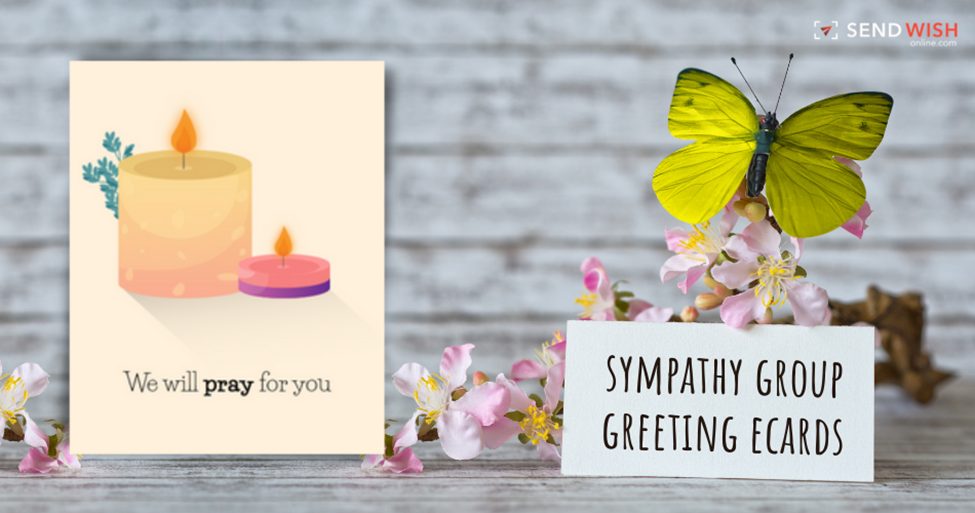In the delicate art of expressing condolences through sympathy cards, finding the right words can be a profound challenge. Yet, it’s within the labyrinth of emotions, memories, and shared experiences that inspiration often resides. This guide explores various avenues where you can discover the wellspring of inspiration to write sympathy cards that offer genuine comfort and solace.
1. Reflect on Shared Memories:
Journey down Memory Lane: Take a quiet moment to reflect on the memories you shared with the person who has passed away. These reflections can unveil anecdotes, shared laughter, and moments of connection that can be beautifully expressed in a sympathy card.
2. Consider the Deceased’s Life:
Celebrate Their Journey: Focus on the life the departed lived. Consider their passions, achievements, and the impact they had on others. Acknowledging and celebrating these aspects can form the foundation of a heartfelt message.
3. Draw from Personal Experiences:
Share Your Grief: Sometimes, expressing your own sense of loss and grief can resonate deeply. Sharing how the news affected you and expressing your own sorrow can create a bridge of empathy with the grieving individual.
4. Seek Inspiration from Literature:
Poetry and Quotes: Turn to literature, poetry, or even quotes from favorite authors. Words penned by others can sometimes articulate feelings more eloquently than we can, providing a profound source of inspiration.
5. Connect with Nature:
Symbolism of Nature: Nature often provides symbols of comfort and renewal. Incorporate imagery such as flowers, trees, or the changing seasons into your message. These symbols can carry a universal sense of hope and continuity.
6. Art and Creativity:
Express through Art: If you’re artistically inclined, consider expressing your condolences through drawings, paintings, or even a carefully chosen photograph. Sometimes, visual expressions can convey emotions in ways words might fall short.
7. Religious and Spiritual Guidance:
Sacred Texts: For those with religious or spiritual beliefs, drawing inspiration from sacred texts or meaningful verses can add a layer of spiritual comfort to your message.
8. Music and Lyrics:
Emotional Resonance: Turn to music and song lyrics that carry emotional resonance. Sometimes, a lyric or a melody can encapsulate feelings in a way that words alone cannot.
9. Empathy as Inspiration:
Put Yourself in Their Shoes: Imagine the grief and pain the recipient is experiencing. Channeling your empathy can guide you in crafting a message that acknowledges their sorrow and offers genuine support.
10. Previous Correspondence:
Revisit Old Letters or Messages: If you’ve corresponded with the grieving individual before, revisit old letters or messages. The sentiments expressed in your previous exchanges might provide a foundation for your current message.
11. Collaborative Efforts:
Ask for Input: If appropriate, consider reaching out to others who knew the deceased. Their perspectives and shared memories might spark ideas and inspiration for your own message.
Navigating the Landscape of Loss
1. Beyond Words:
Acts of Kindness: Sometimes, actions speak louder than words. Acts of kindness, coupled with a sympathy card, can provide profound comfort.
2. Ongoing Support:
Continual Check-Ins: Grieving doesn’t follow a strict timeline. Sending follow-up messages or cards weeks or months later shows ongoing support, recognizing that the journey through grief is a marathon, not a sprint.
Also Read: Chiffon Gown Styles for Ladies [Top Collection Ideas]
Conclusion: The Art of Comforting Words
In the tapestry of grief, your sympathy card is a unique thread woven with care and compassion. Drawing inspiration from various sources ensures that your message is not only heartfelt but also tailored to the individual you are comforting. In these moments of sorrow, your words, no matter how simple, can provide a profound sense of solace. Remember, the true art of crafting sympathy cards lies in the sincerity of your sentiments and the genuine connection you share with those who are grieving.

